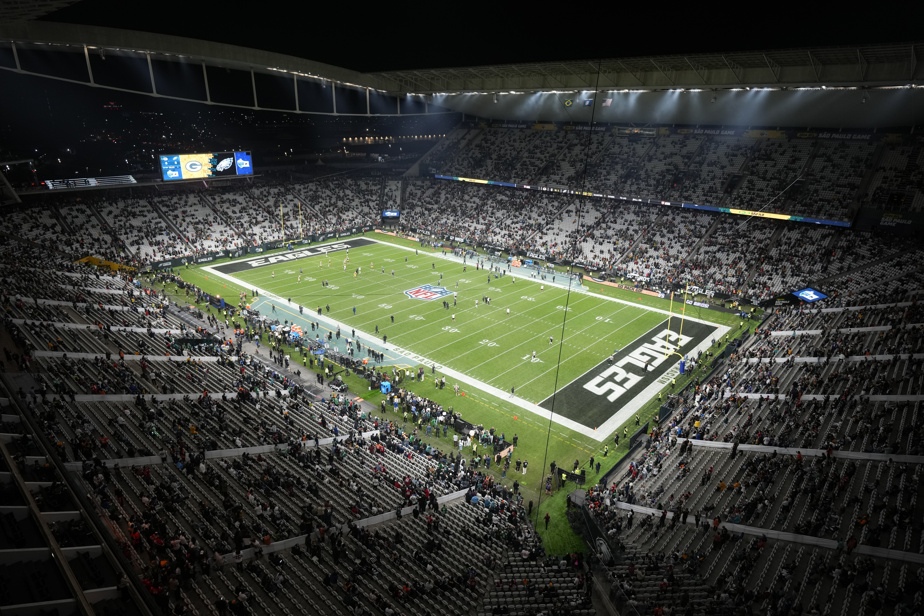(Pittsburgh) The NFL Players Association (NFLPA) would like to see more consistency in playing surface conditions, both in the United States and abroad.
NFLPA executive director Lloyd Howell Jr. said Wednesday that the union plans to be more assertive about field conditions in the future, especially as the NFL’s international schedule lengthens.
The Philadelphia Eagles and Green Bay Packers spent much of their season opener in São Paulo, Brazil, last Friday looking for traction at NeoQuimica Arena, home of a soccer team in Brazil’s top league.
Eagles running back Saquon Barkley slipped while trying to catch the ball on the team’s first offensive drive, and things didn’t get much better for either side, even after the players changed their cleats.
Howell said the NFLPA and the league worked together to get the field ready, but added: “Different country, different type of grass, different climate. You saw what you saw.”
Howell believes the NFLPA and the league itself need to more clearly define what is needed to create a safe playing surface before they begin talking to owners about potential international games. NFL Commissioner Roger Goodell has publicly stated that he hopes to increase the number of international games to 16 per season.
“If you’re dealing with FIFA, there’s really not a lot of negotiation as far as what surface soccer players are going to play on,” Howell said. “I think as our game grows, we’ll be just as decisive about ‘what are the requirements for our game to be played abroad.'”
The NFLA also has concerns about games being played in the United States. Howell said more than 90 percent of players prefer natural grass.
“I think the league is aware that we need to have more consistency, whether it’s with synthetic or with grass,” he said.
The NFLA also wants to discuss in late fall or early winter a proposed change to the offseason schedule. The association would like a longer break between the end of one season and the start of another, pushing organized team activities and minicamps to early summer.
Currently, teams hold activities and minicamps in May and June, before a five- or six-week break leading up to training camps.
“It’s a fact that consistent, progressive preparation without any interruptions before the season reduces the number of injuries,” Howell said. “We’re talking about lower extremity and soft tissue injuries. So if you look at the injury rate right now, it actually increases in the first three weeks for a variety of reasons, but one of them is you haven’t had consistent preparation.”
Howell added that those discussions will be separate from the ones about an 18-game schedule, a proposition that seems inevitable. Regardless of when — or if — the schedule goes from 17 to 18 games, Howell said the players deserve a second week off.
The league attempted a two-week bye schedule in 1993, but quickly abandoned it.
“It’s a long season,” Howell said. “The wear and tear on your body … everybody’s pretty much injured and banged up. So to have a second week off, even now, at 17 games, that’s what a lot of guys want.”
